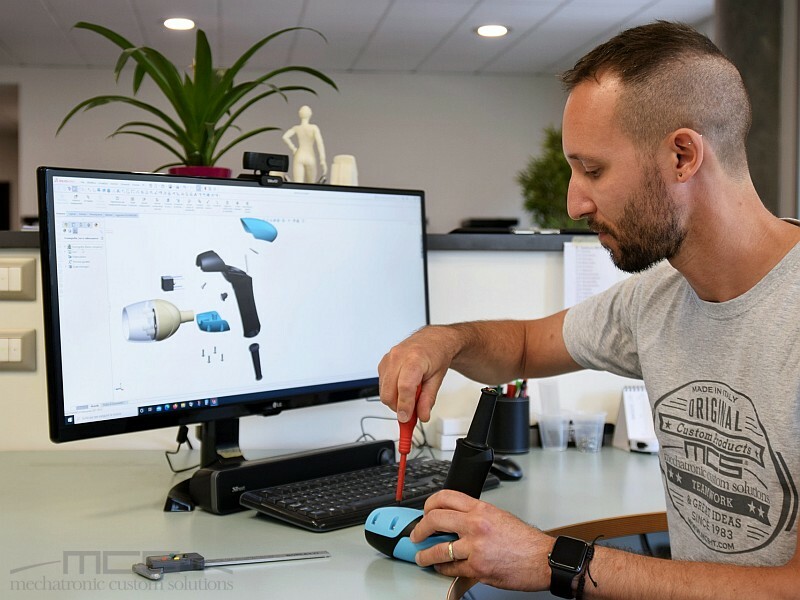The secret of successful design resides in the people who manage it. So here is the first in a series of interviews dedicated to MCS collaborators. Let’s start with Alberto Castopoli, who is design manager of the electronics enclosures.
Good morning Alberto, tell us briefly who are you and what do you do within MCS?
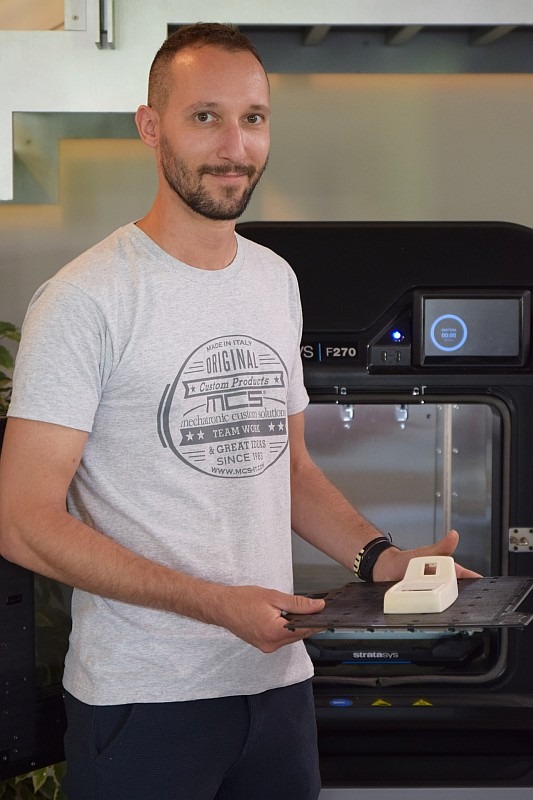
I am in charge of electronics enclosures design. I have a professional background in designing with CAD/CAM software, with a specialization in plastic mold design.
Over the years I have developed my skills through courses on product design and development and on its industrialization. Along my professional career path, I have worked in various fields, from the design of civil and industrial sewage treatment plants to the implementation of lasers for medical use.
In MCS we make the finished products: what I design is what reaches the end user; and to produce components that are assembled by other companies at the same time as the final product (equipment, machinery, etc.). As can be seen, the “enclosure” product is very varied.
I make the design, but I also follow the development of what has been designed: the designer knows what will have to be created, so I follow those details that guarantee the product the success of the product. Obviously, you don’t work in compartmentalized ways; there has to be continuous discussion with the production departments. The project is not just a “beautiful design,” it needs to be concretized, made feasible and repeatable.
How do you try to capture the customer’s point of view, how do you try to interpret their needs?
The initial briefing with the customer is handled by Alessandro Vignaga, the company’s Administrator and Sales Manager. It may happen that you have a confrontation with the client finalize a certain project. Before moving on to the final stage of design, in fact, it may be useful to identify “the poles” within which one can move. Often the customer has an idea in mind, however, you need to understand if it is a “strict” or general indication, that is, what level of flexibility you have.
Can you briefly describe the stages from the first brief with the client to the implementation phase?
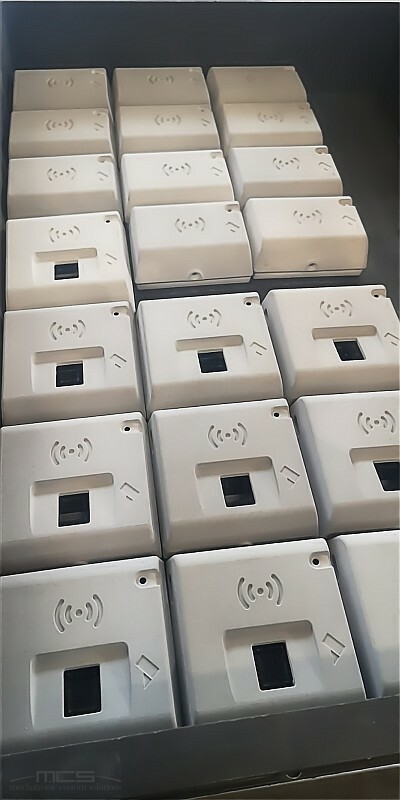
After an initial confrontation phase, two valid allies enter the field: pen and paper. It is obvious that if there is need to manufacture a light metal carpentry enclosure that only needs to hold an electronic circuit board and which is inserted in an electrical cabinet, one can start with computer-based design, because a high level of design is not required: there is only a functional component.
In addition, the experience and knowledge gained allow you to “get straight to the point.” In other cases, you need to carefully study the ergonomics, design, materials, etc., in order to meet the customer’s expectations. Therefore, it may be useful to draw and illustrate a handmade sketch.
Upon approval of the draft, it is taken digitally, that is, a render of the product is created, in which its salient features are summarized what will be provided is reported in detail. At this point the client’s validation is expected.
In quite rare cases, where the planning is “full-bodied”, we proceed “step-by-step”. But generally, after presenting the preview of the finished product, we wait for the client’s approval of the design. With validation begins the process of designing, developing and production all the various components of the product.
Of course, the production is followed up to the end and also includes a final validation process, to be sure that what you have designed has actually been created in all its specifications.
What are your working tools?
Leaving aside pen and paper, I use SolidWorks, CAD software, to design all the modeling and design part of the enclosure, supported by CorelDraw, a graphics suite. Often the two programs work together, especially when we illustrate extremely realistic renders to the client. Inevitable then is the 3D printer, used by the technical department for mock-ups and functional verification of products.
For example, we used it a lot this previously for a customer who has in charged us a new line of products consisting of five different types of enclosures. The 3D printer permitted the customer to touch the final result and allowed us to check the overall sizes of the enclosures.
Sometimes, in fact, with the 3D modelling on computer you may miss a detail, such as a space that prevents the electronic circuit board from fitting together perfectly: something you only verify when you have the enclosure in your hands. The 3D printer has become an indispensable tool because it significantly accelerates the design and prevents many mistakes.
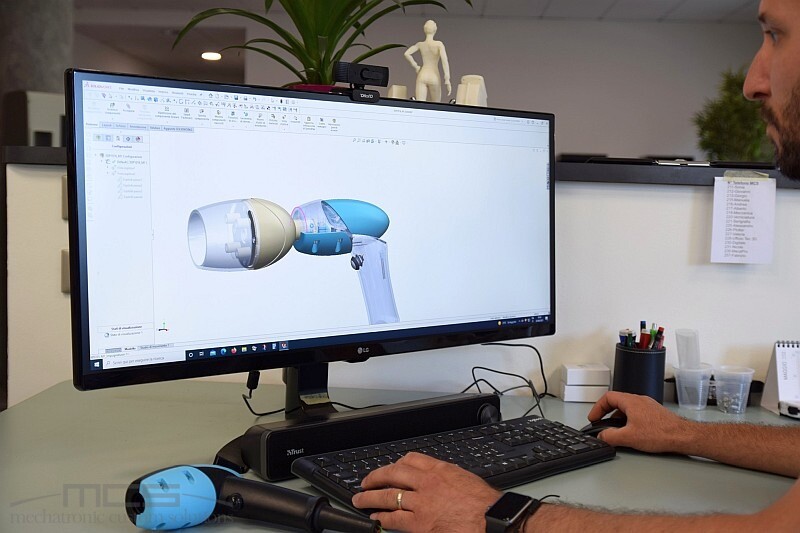
In your opinion, what are the most “delicate” aspects in designing a container for electronics?
Each enclosure is a separate matter: there may be critical aspects depending on the intended use, the environment of use. Sometimes in the same environment there are many variables. Each project must be analyzed for itself: there are no standard factors. We can say that we never get bored!
What do you see as the strengths of MCS?
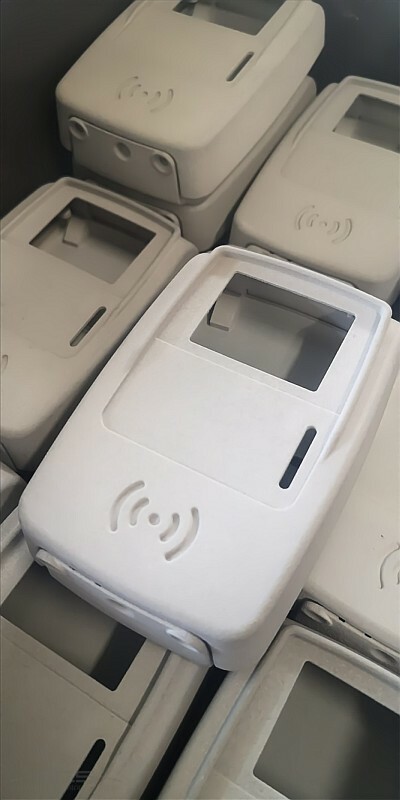
Back in the day, Alessandro Vignaga introduced MCS to me in this way, “a series of micro-companies enclosed in a single company,” and it is really true.
In my previous experiences, I was able to personally experience the difficulty of interfacing with different suppliers and managing different problems, with the aim of making all the pieces of the puzzle fit together: it is not easy. It is hard for someone who works in a technical department, let alone for a company that does not have a technical office!
One of MCS’s strengths is its ability to offer a complete package. Of course, even a design studio can offer a complete package: it takes care of the project and of finding the various suppliers.
But MCS is quite different, it is a supplier that can offer the customer all the solutions they need: everything is much faster, much more controlled. All processes are under the close control of MCS, which knows exactly who does what, and how they do it. Everything is monitored to ensure the best outcome of the product.
The knowledge of all these processes and accumulated experience are distilled into know-how that is difficult to replicate: nothing is improvised at MCS. Those who do not have a technical office or particular expertise in the design and development of a product will find in MCS valuable assistance from every point of view.
What is the project that has given you the most satisfaction and why?
I would say the handpiece made for a company that deals with environmental decontamination. Entirely made in 3D printing, this handpiece encompasses several factors: design, ergonomics, innovative technologies and materials. In a handpiece that has four screws, we were able to insert everything that was needed: electronic circuit boards, electrical cables, buttons and nozzles.
This product is a perfect synthesis of functionality, solidity and precision. It represents very well MCS’s ability to intelligently integrate all the components required by the customer in order to fully meet the customer’s expectations.
Interview by Mauro Zamberlan – MCS Marketing Office

